Who was Jack Mossop? Did he and an accomplice murder a woman after a night of drinking at the Lyttleton Arms near Hagley? Did they stuff her still warm body into a wych elm in Hagley Wood? Did the memory of this traumatic event drive Jack mad? Did he die of an overdose in a mental hospital in 1942?
So many questions. So many suppositions and rumours. It’s hard to tease apart fact and fiction. But let’s give it a try. Before we get started, I am deeply indebted to Duncan Honeybourne. for sharing his information on the Mossop clan. Duncan’s grandmother was a first cousin of Jack Mossop and he has conducted extensive interviews with the elders in the Mossop-Crump family.
Family
It all begins in Ireland, as most great stories do. Maurice Mossop and his wife Mary, both born in County Mayo, emigrated to England with their three young sons, sometime between 1847 and 1851. The family settled in Eccleshall, Staffordshire and Maurice worked at various jobs including agricultural labourer and Licensed Lodging House Keeper. One of their sons was Edward Mossop – Jack’s grandfather.
Edward Mossop, a bricklayer, married Ellen Hall in 1869. The couple moved to the United States where they had three daughters, but by 1878, the young family had moved back to Eccleshall. Edward continued to work in the building trade and was well known in Eccleshall. Unfortunately, in the 1890s, Edward declared bankruptcy and the family fell on hard times. From rural Eccleshall they moved south to the booming industrial town of Smethwick, a few miles from Birmingham. Here they reinvented themselves as steeplejacks (craftsmen who scale buildings, chimneys and church steeples to carry out repairs or maintenance). Edward’s sons worked as steeplejacks and the family developed a flourishing business. Edward and Ellen eventually had 13 children, not all of whom survived childhood. One of their sons was Edward Percy (or simply Percy) Mossop – Jack’s father (we’re getting closer).
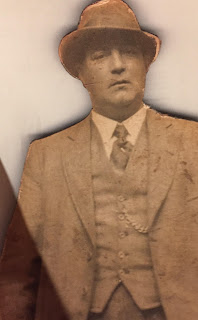
Percy Mossop was born in 1881 in Eccleshall, Staffordshire. He and his surviving brothers were apparently quite a crew and known locally as the “Seven Sods” on account of their drinking and wild behaviour. Percy showed signs of settling down when he married Charlotte Crump around 1911. Charlotte was the daughter of Mary Anne Smith and George Crump, a publican in the village of Claverley (Boycott Arms pub). Lolla, as Charlotte was called, was exceptionally beautiful, said to have been “the most beautiful girl in Claverley”.
Four of Percy’s brothers served in World War I but it would appear that Percy himself managed to avoid military service. Of the four, two came home from the war and two gave the ultimate sacrifice.
- Private William Augustine Mossop of the Sherwood Foresters (Notts and Derby Regiment) died of wounds on 16 September 1917 in Poperinge, Flanders, Belgium. He is commemorated at the Lijssenthoek Military Cemetery in Belgium.
- Corporal Bernard Alfred Mossop of the Gloucestershire Regiment was lost in action on 11 October 1915 in Loos, France. He is commemorated at the Loos Military Cemetery in France.
- Corporal (A/Sgt) George Mossop joined the Warwickshire Regiment before the war (1902-1903?) and served as a stretcher bearer with 14th Field Ambulance of the Royal Army Medical Corps during World War I. He was awarded the Distinguished Conduct Medal and the Military Medal with bar.
- Private Vincent Mossop joined the Royal Army Service Corps (RASC) in 1915 and served in France from 1916 to 1917 as a lorry driver.
As for Percy, he and Charlotte had two children before the war broke out, Jack and Louis. In 1918, Percy’s wife, Charlotte, passed away during the Spanish Flu epidemic and her parents, displeased with Percy’s attention (or lack thereof) to his two sons (Jack and Louis) stepped into the gap. Jack was raised by Charlotte’s mother, Mary Anne (Smith) Crump while Louis was sent elsewhere.
Percy then had another five children with Violet Catherine Vant but apparently never married her, swearing there’d “never be a second Mrs. Mossop”. Percy passed away on 15 March 1936 in Birmingham with effects totalling £425 1s. 6d. It would appear that Percy never had much to do with his first two sons. Louis, in particular, was heard to say that he had “no time for his father”, saying that his father hadn’t bothered with him. Louis later kept a pub on the Birmingham New Road in Oldbury/Dudley and passed away in 1982.
And now, finally, we reach the infamous Jack Mossop! Jack was born 29 August 1912 and, as we’ve seen above, lost his mother in 1918 when he was only six years old. Taken in by his maternal grandmother, Jack was said to have been a very intelligent child, always building things. We then lose Jack’s trail and pick him up again 14 years later.
Marriage to Una Ella Abel
In 1932, Jack married Una Ella Abel in Wolverhampton, Staffordshire. The marriage was registered in the third quarter of the year (July/August/September) thus the birth of their son, Julian Michael Mossop, on 3 August 1932, would suggest a hasty wedding. Jack and Una lived at Bridge House, Wombourne, near Wolverhampton for several years while Jack studied to be a surveyor. It would appear, however, that Julian did not live with his parents. A workmate of Jacks’ from the late 1930s/early 1940s, Bill Wilson, said that he never saw the boy and understood that Julian had been farmed out to the grandmother. Given that Julian’s paternal grandmother (Charlotte Crump) had passed away in 1918, this could be a reference to his maternal grandmother, Una’s own mother. Or, it could be a reference Jack’s grandmother, Mary Anne (Smith) Crump who raised Jack and possibly Julian. Hard to tell.
Work Career
In 1936, Jack was working for Lockheed in Leamington, an automotive parts manufacturer (brakes, hydraulic components, clutches, etc.) who eventually manufactured aircraft parts as well. The following year, in 1937, Jack joined the A.S.T. as a Pilot Officer and was stationed at Hamble, near Southampton.
A bit of digging suggests that this was Airwork Services Training (later Air Services Training). There is some evidence that indicates A.S.T. was involved in training reserve pilots for the RAF.
Air Service Training Limited, part of Armstrong Whitworth Aircraft, appeared in 1931 to instruct reserve pilots; more facilities were created at the southern end of the airfield for No 3 Elementary & Reserve Flying Training School which formed in 1933. So began a long career in this aviation capacity for Hamble over several decades, the training syllabus being gradually expanded, although aircraft flight testing in the 1930s was not absent either with development of the large four-engined Armstrong Whitworth Ensign airliner. (Hamble – Airfields)
There have been many rumours that Jack was a member of the RAF or wore an RAF uniform around town, even though he was not an active member of the RAF. The truth may simply be that he did train as a reserve pilot and later wore his A.S.T. uniform around town. There is no mention whether Jack received flight training elsewhere prior to 1937. By 1938, however, Jack had moved on and was working at Armstrong Siddeley Works and then moved over to Standard Aero Works, both in Coventry.
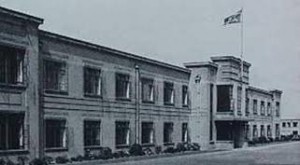
(From The Ferguson Club)
On 3 November 1939, Jack started work as a fitter at #1 Factory, Fletchamstead (Standard Aero Works) and the following November was transferred to #2 Factory at Banner Lane where he worked in the assembly shop.
Standard Aero Works was part of Standard Motor Works, and the factory at Banner Lane apparently manufactured Bristol Hercules aero engines. It was at the Banner Lane location, that Jack became friendly with a co-worker, Bill Wilson. Jack’s co-worker understood that Jack had been invalided out of the “RAF” before he met him. Jack would “say laughingly that he crash landed a plane too often and make a joke about it. Said he had head injuries.”
Bill also said that he stayed with the Mossops for a time while they lived at 39 Barrow Road, Kenilworth, just southwest of Coventry. Interestingly, there was a Jack Hainsworth who also worked at #2 Factory at Banner Lane at the same time that Jack Mossop worked there. Jack Hainsworth also resided at 39 Barrow Road at one point. The Coventry Police speculated that this person could be identical with Alfred James Hainsworth who later married Una (Abel) Mossop after her separation from Jack Mossop.
The possibility of head injuries and repeated concussions from Jack’s test pilot career begins to make sense of Jack’s deteriorating mental health over the next few years.
Van Raalt & the Dutch Piece
Much of the following information comes from Bill Wilson’s and Una Hainsworth’s statements to police in late 1953. Given the notorious fallibility of human memory, we would probably do well to take what follows with a grain of salt. Bill’s recollection do, however, add a bit of a balance to Una’s memories.
According to Una, Jack met a Dutchman named Van Raalt in 1940. The Dutchman didn’t seem to work at any particular job and came round to their house at 39 Barrow Road on occasion. Una got the impression that Van Raalt was “engaged on some work that he did not wish to talk about”. It could have been a secret wartime occupation but in Una’s opinion “it might have been that he was a spy for he had plenty of money and there were times that [Jack] appeared to have plenty of money after meeting him.” Apparently being taciturn and flush with money = espionage in Una’s mind. It could equally well have been due to the two men being involved in the black market.
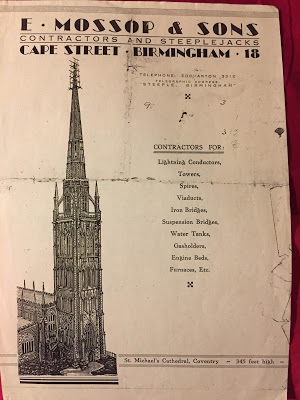
On the other hand, Bill Wilson said that while Jack knew a lot of people, he had no recollection of any foreigners. Bill did say that Jack’s father (presumably Percy) was “in quite a good way at business” with “steeplejacks” and that Jack was always talking about having some money left. This may have simply been Jack’s way of covering an influx of cash acquired by less than legal means. Or it may have been accurate. Jack’s grandfather (Edward) and father (Percy) had developed a flourishing steeplejack business. Whether Jack had received significant funds upon his father’s death is another matter.
[Stephen Hartland kindly shared a link to a Google photo album showing a plaque which reads: “Repaired by MOSSOP Bros – Steeplejacks – Smethwick]
According to Bill, Jack and Una “didn’t hit it off too well” and they were having “trouble”. Even Una admitted that Jack did not treat her very well. The couple were “not living a normal life” and Bill got the impression that something was worrying him. Jack could be “very moody and suffered from headaches and nightmares”. He was also a “very heavy drinker” and Bill said that Jack took a lot of time off work. Jack was also quite friendly with the opposite sex and liked to hang around them and buy them drinks. Bill figured that these women “felt sorry for him”.
So, we have a picture of Jack Mossop, an unhappily married man who had, by his own admission, suffered repeated head injuries during his time as a pilot. Even though he had a job, he took a lot of time off of work. He could be very moody and often suffered from headaches and nightmares. On top of that, he was a heavy drinker.
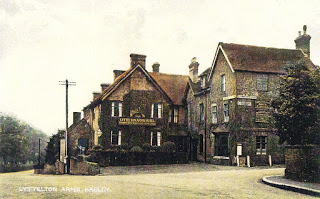
We now come to Una’s story about Jack and Van Raalt. In March or April 1941, Jack came home at around 1:00 am, all white and agitated. He asked Una for a drink and she retorted that, in her opinion, he had had quite enough to drink as he had been out all day but, she made him a drink. Jack told Una that he had been at the Lyttleton Arms (a pub) with Van Raalt and the “Dutch piece” and that the woman had got “awkward”. It would appear that the trio then decided to leave. Jack was driving Van Raalt’s Rover car and the woman got into the front passenger seat while Van Raalt sat in the back. At one point, the woman passed out and slumped towards Jack. Van Raalt told Jack to drive to a wood where they stuck her in a hollow tree. Van Raalt figured that she would come to her senses the following morning. Interestingly, there is absolutely no mention in Una’s police statement that Jack made a follow-up visit to the hollow tree as appears in Quaestor’s 1958 newspaper account.
Between April and December, 1941, Una says that Jack was very jumpy. He drank more than usual, was nearly always away from work and seemed to have more money to spend. Jack would take his old Standard car and go off for days on end without informing her. All of this led Una to suspect that he was obtaining money somehow and that Jack may have been meeting Van Raalt.
Bill Wilson confirmed that he and Jack owned a 1934 Standard black saloon car jointly, sharing the running expenses. In Bill’s opinion, however, Jack “was the type of fellow that would not harm anyone” and he “did not have much back bone”. In Bill’s opinion, the story about the “Dutch piece” and the hollow tree might have been something that Jack imagined he had done or that he dreamt about when “he was full of drink”.
By December 1941, Una had had enough of Jack Mossop. She too noted that he was very fond of women and that women’s clothes appeared in their house. On 13 December, she left Jack and moved to Henley in Arden, presumably in the company of James Hainsworth. She did visit the house at 39 Barrow Road on three occasions after December 1941, trying to retrieve her possessions, including furniture. On one of those occasions, she saw Jack and he told her “that he thought he was losing his mind as he kept seeing the woman in the tree and she was leering at him”. Jack held his head in his hands and said “it is getting on my nerves, I am going crazy”. That was the last time Una saw her ex-husband, Jack Mossop.
Slow Descent into Madness
Head injuries, nightmares, headaches, moodiness, heavy drinking and now an admission that he thought he was “losing his mind”. Jack Mossop was not in a good way. This is confirmed by a police report from 4 February 1942. Jack Mossop reported to the Coventry Police that his car and driver were missing. Bill Wilson said that this was “a new one on me”. He didn’t know anything about that. Given that Bill was part owner of the car, one would think he would have known if his asset had been stolen or declared missing.

(From County Asylums site – has a good history of the place)
By June 1942, Jack’s condition had deteriorated significantly. According to Bill Wilson, Jack suffered some sort of “mental delusion” while at work and a co-worker named Terry Mitchell took Jack home to his people (family) in Claverley. From there, he was quickly admitted to the Stafford County Mental Hospital and declared insane. Bill never saw Jack again and one of Jack’s Claverley relations said that only family could visit him. According to Bill, a doctor had said that if Jack had come in sooner, they could have operated on him, but that he had left it too late. This was clearly not a sudden descent into insanity, but something that had been building for a while.
Una also heard that Jack had been admitted to the Mental Hospital at Stafford. Several months later, she learned of Jack’s death when James Hainsworth told her than an application had been made at Standard Aero Works claiming money that was due to Jack. This tidbit seems to confirm that the “Jack Hainsworth” noted earlier could be the same as Una’s James Hainsworth. From James’ information, Una learned that Jack had died in August 1942 at the Mental Hospital. In her closing words to the police, Una noted that “I, of course, have no proof, that what I have told you now is the truth, but bearing in mind my husband’s condition and what he said to me at the time, I have done my best to recall it to help in the enquiry.”
Addendum
There were several scribbled police notes, in addition to Una’s official statement, that mention a few odds and ends.
Van Raalt apparently had a Rover car which Jack used to drive for him. When asked about a Rover car, Bill Wilson said that he and Jack had bought an old Rover from a scrap merchant but never got it working.
There is also a note that a man with the stage name of Frack appeared at the Coventry Hippodrome in 1938. Another note stated that Jack stayed at a back house in Grosvenor Road, Coventry. This was a boarding house about a mile from the theatre. Bill Wilson confirmed that he and Jack had stayed at 9 Grosvenor Road in Coventry, at the house of Mrs. Galbraith for a short while. He denied that they had ever met any theatre folk.
Finally, a note on 28 December 1953, from Inspector Morgan at Kenilworth, who stated that “Una Hainsworth alias Anna is well known and when she left Kenilworth she was in debt to all and sundry and they would like to get their hands on her.”
Death Certificate
There have been several rumours around the death of Jack Mossop. One of the most recent, first mentioned in the HD Paranormal film suggests that Jack died of an overdose at the Stafford County Mental Hospital. Let’s clear that up right away by taking a look at Jack’s official death registration.
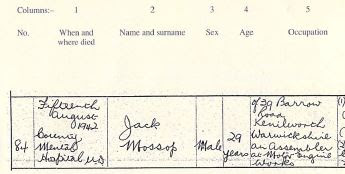
Jack passed away on 15 August, 1942 at the County Mental Hospital.
He was 29 years old and a resident of 39 Barron Road, Kenilworth.
He was working as an assembler at Motor Engine Works (not sure if this is a company name or just a general description of the factory or perhaps a variation on Standard Motor Works.
Now we come to the interesting part – Cause of Death.

Jack died of:
(a) cerebral softening
(b) myocardial degeneration
(c) chronic nephritis
(d) acute confusional insanity
The cause of death on a death registration generally includes four items:
- the immediate cause of death – in this case cerebral softening
- the intermediate causes, which triggered the immediate cause – in this case myocardial degeneration
- the underlying causes, which triggered the chain of events leading to death – in this case chronic nephritis
- any other diseases and disorders the person had at the time of death, even though they did not directly cause the death – in this case, acute confusional insanity
The terms used on Jack’s death registration are rather dated but seem to be associated with the following.
Cerebral softening is a rather broad term but generally seems to be ascribed to:
- Cerebral Infarction and Ischemia – different types of strokes
- Infection
- Traumatic Brain Injury – car accidents, bad falls, etc
Myocardial degeneration indicates that Jack’s heart wasn’t doing so well. One of the contributing factors can be alcohol abuse, which would seem to fit in Jack’s case.
Chronic nephritis would indicate that he had chronic kidney disease. It can run in the family and, in young men, can be associated with vision and hearing loss.
Acute confusional insanity was a term in common use in the late 19th and early to mid-20th centuries. It can be described as having an early stage during which there was “confusion of thought, restlessness, sleeplessness, some disorder of the action of the heart and the stomach, and then the acute condition came on suddenly, with acute confusion, vivid hallucinations of sight and hearing, disorder of function, and great lessening of the common sensibility of the body” – Physical Sympoms of Acute Confusional Insanity – Br. Med. J. 1935, Mar 9 (3870) 487-488
Summary

I think we can safely say that Jack Mossop was not a healthy man, either physically or mentally. It is also pretty clear that his descent into madness had several contributing factors – head injuries suffered during his career as a pilot and chronic alcohol abuse. There may also have been some genetics involved but, for a 29 year old man, Jack was in a really poor state.
There is no evidence that Jack died of an overdose (as per HD Paranormal) although I suppose conspiracy-minded theorists can always rely on the idea that someone falsified Jack’s death registration. In which case, we can leave the realm of facts behind us, and just wander off into a dream world of rumours, suppositions and theories.
The one intriguing aspect that remains is this: was the story about Jack, Van Raalt and a woman being placed in a tree actually accurate? Did Jack perhaps hear a story about a woman being placed in a tree? Or was Una’s account of Jack’s story coloured by news reports that she had read about Bella in the Wych Elm? Or was the entire story simply a nightmare of Jack’s tortured and delusional mind? It is interesting to note that, in Una’s recollection, Jack never said that he and Van Raalt killed the woman. They just placed her living, breathing body into a tree to teach her a lesson.
Final Resting Place
Jack Mossop is buried in the churchyard cemetery in Claverley.
Many thanks again to Duncan Honeybourne for tracking down the final resting place of Jack Mossop and graciously sharing his photographs with me. Jack Mossop is buried in a plot with his mother, Charlotte (Crump) Mossop. She’s the one who married Jack’s father, Percy Mossop, and then died in 1918 of the Spanish Flu.
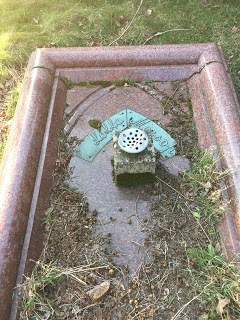
The top plate of the gravestone reads “Lolla Mossop”.
An inscription along the left edge of the gravestone reads:
“In loving memory of Charlotte Mossop who died Nov 2nd 1918 aged 27 years”
And on the other side of the plot…
“Also of her beloved son Jack who died Aug 15th 1942 aged 29 years”

There is also a gravestone for George Crump and his wife Mary Anne Smith, Jack’s grandparents. The inscription reads:
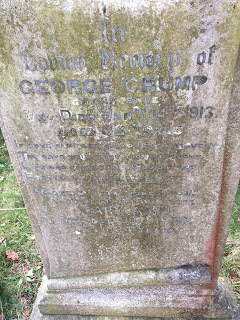
“In loving memory of
George Crump
of Claverley
who died Jan 14th 1913
aged 52 years
If love and care should death prevent
thy days would not soon be spent
life was desired but God did see
eternal life was best for thee
Gone but not forgotten
Also of his beloved wife
Mary Ann
Died Feb 29th 1948
Aged 84 years”
Sources
West Mercia Police Files on the Hagley Wood Mystery – specifically Original Documents/Folder 4 which deals with Una Hainsworth and has her statement to the police and the statement of Jack’s co-worker Bill Wilson. The file also has some records from the Standard Aero Works company regarding Jack’s employment history.
Ancestry.co.uk – birth, marriage, death and census records for various members of Jack’s family
Mossop Family records – I am deeply indebted to Duncan Honeybourne for sharing his information freely and for the photographs of Percy Mossop and the Claverley churchyard photographs.
Eccleshall Great War Project – great stories on all four Mossop brothers who served in WWI with a downloadable document that provides more information on the Mossop clan (starting in Ireland, as all great stories do). The document is primarily the work of Duncan Honeybourne, with contributions from his cousin Rod.
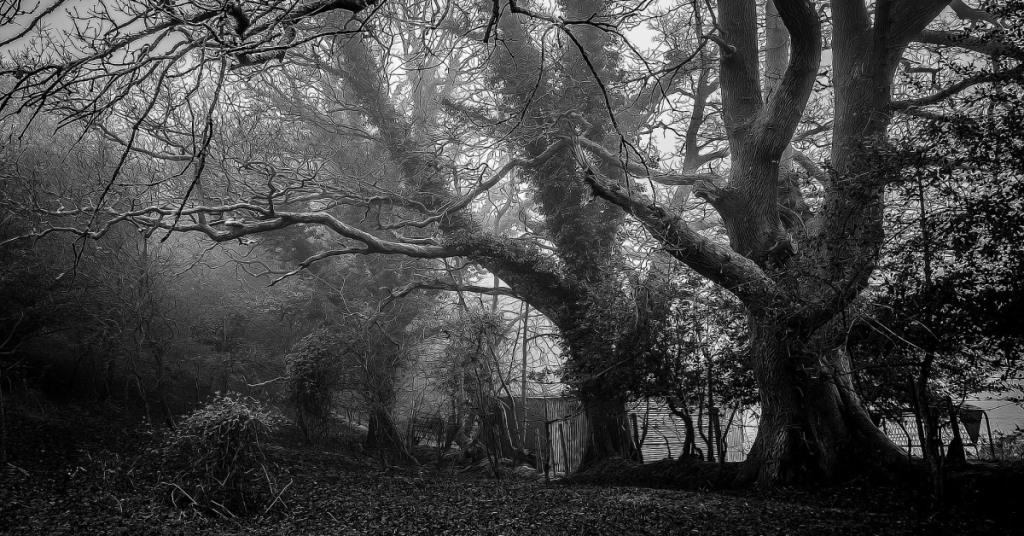
This is so well written and very informative. I've been researching on mysteries for a long while. And this definitely satiates my appetite really well!
You may find this of interest:
https://photos.app.goo.gl/xLdDhsVKnuFdhgtS9
On St Augustine's Church, Edgbaston
Cool! Thanks for the link – I'll update blog and insert…